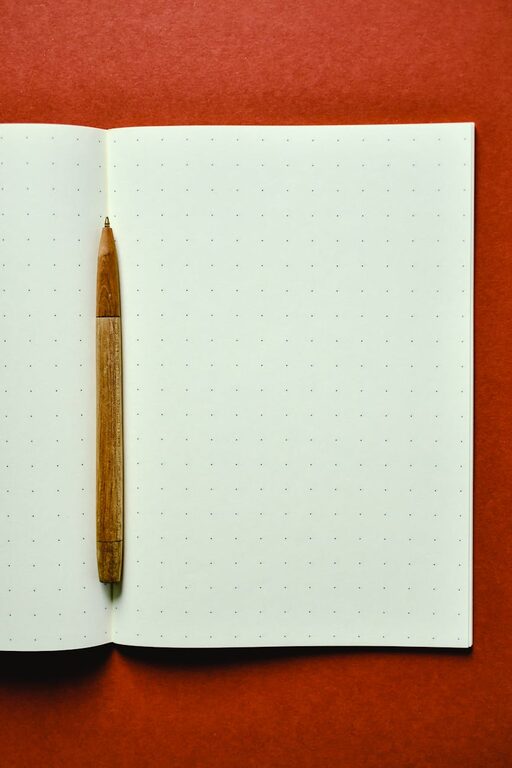
Bullet journaling has become a popular way to combine organization and creativity in a single notebook. Whether you want to manage your daily tasks, track habits, or simply express yourself, a bullet journal can be customized to fit your unique needs. If you’re new to bullet journaling, this beginner guide will walk you through everything you need to get started.
What Is a Bullet Journal?
A bullet journal is a flexible planning system created by Ryder Carroll. It uses simple symbols and rapid logging techniques to help users organize their tasks, events, and notes efficiently. Unlike traditional planners with fixed layouts, a bullet journal lets you design your own spreads—meaning the sky’s the limit when it comes to how you use it.
Why Start a Bullet Journal?
– Personalized organization: Tailor your journal to fit your schedule and goals.
– Boosts productivity: Helps you prioritize tasks and track deadlines.
– Encourages mindfulness: Reflect on progress and stay focused.
– Creativity outlet: Use colors, doodles, and layouts that express your style.
– Habit tracking: Monitor habits and goals in one place.
Supplies You’ll Need
Starting a bullet journal doesn’t require fancy tools, but a few basics help.
– Notebook: A dotted grid notebook is popular for flexibility, but lined or blank notebooks work, too.
– Pen: Any pen you like; many bullet journalers use fineliners or gel pens.
– Ruler: Useful for drawing straight lines and creating neat layouts.
– Optional: Colored markers, stickers, washi tape for decoration.
Getting Started: The Essential Sections
Here are the basic components of a bullet journal to help you organize your content.
1. Index
The first few pages serve as the index, where you list page titles and numbers for easy navigation. As you add collections or monthly logs, update the index to find information quickly.
2. Future Log
This section is for long-term planning. Divide a few pages to note important dates, appointments, and goals for the months ahead.
3. Monthly Log
Create a calendar page to overview your current month. This can be a traditional calendar or a list of dates alongside events and tasks.
4. Daily Log
Here you jot down daily tasks, events, and notes. Use bullet points or symbols to distinguish between completed tasks, events, and notes.
5. Collections
Collections are custom pages created for specific topics—such as habit trackers, reading lists, project plans, or goals.
Understanding the Bullet Journal Symbols
Ryder Carroll’s method uses simple symbols to categorize items:
– Task: • (a bullet point)
– Event: ○ (a circle)
– Note: – (a dash)
– Completed task: × (an X over a bullet)
– Migrated task: > (task moved to future or next day)
– Scheduled task: < (task scheduled for later)
Using these symbols helps you quickly identify your entries and manage your lists.
Step-by-Step: Setting Up Your First Bullet Journal
Step 1: Number Your Pages
If your notebook isn’t pre-numbered, add numbers to each page to keep your journal organized.
Step 2: Create Your Index
Reserve the first 2–3 pages for the index. Leave them blank initially to fill out later.
Step 3: Set Up Future Log
Divide two pages into sections for the upcoming 4–6 months. Write down upcoming events, deadlines, and goals.
Step 4: Create Monthly Log
Start your current month’s log with the dates listed down the side and space for notes or events beside them.
Step 5: Start Daily Logs
Each day, write the date at the top and add your tasks, events, and notes using the bullet symbols. Adjust spacing depending on how busy your day is.
Tips for Keeping Your Bullet Journal Effective
– Start simple: Don’t overload your journal with layouts or decorations at first.
– Be consistent: Set a daily or weekly time to update your journal.
– Use pencil first: Outline pages if you want to avoid mistakes.
– Customize as needed: Add pages and collections that suit your lifestyle.
– Reflect regularly: Review completed tasks and migrate unfinished ones to stay on track.
Fun Ideas to Personalize Your Bullet Journal
If you’re ready to get creative, try these ideas:
– Color coding: Assign colors to different categories or moods.
– Habit trackers: Track sleep, water intake, exercise, or meditation.
– Gratitude log: Note daily things you’re thankful for.
– Mood tracker: Use charts or doodles to record emotions.
– Quotes and affirmations: Add motivational sayings throughout your journal.
Final Thoughts
Bullet journaling is more than just a planner—it’s a way to combine productivity with self-expression. Starting a bullet journal can help you stay organized, track your habits, and spark creativity. Remember, there’s no right or wrong way to bullet journal. Explore, experiment, and make it your own!
Ready to start your bullet journaling journey? Grab your favorite notebook and pen, and enjoy the process of organizing your life one bullet at a time.
